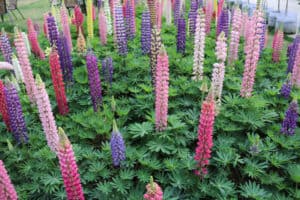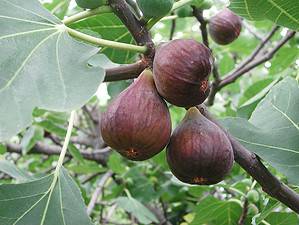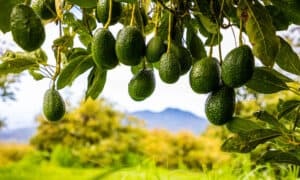Are you a fan of leafy greens? If so, you’re probably familiar with good ol’ spinach and lettuce. What you might not know is that lettuce is actually a genus of plants that contains over 50 species!
Let’s compare the species of spinach vs. lettuce (the genus), and discuss their plant classification, physical characteristics, native ranges and ideal growing conditions, and culinary uses.
Spinach vs. Lettuce: A Quick Look:
| Spinach | Lettuce | |
|---|---|---|
| Plant Classification | Spinacia oleracea | Lactuca spp. |
| Physical Characteristics | Leafy edible green that grows 6 inches to 1 foot tall with a similar spread. Leaves are green, simple, ovate-arrow-shaped (depending on cultivar) with smooth margins. Leaves are 1-3 inches long and wide at maturity. Flowers are less than an inch, non-showy, and yellow or green. | Genus of flowering plant with wild and cultivated species. Plants can range from 6 inches to 8 feet tall. Leave types range from rounded to jagged and lanceolate. Flowers are typically tiny, white, yellow or purple, and have many slender petals. Some cultivated varieties of lettuce have purple or red leaves. |
| Native Range and Ideal Growing Conditions | Native to Southwest Asia. Prefers to grow in full sun to partial shade. Prefers fertile, moist, well-draining soil with a pH of 6.0-8.0. USDA hardiness Zones 2a-11b. | Most species are native to Eurasia. Most lettuce species grow best in full sun to partial shade in well-draining, moist, slightly acidic soils. They are typically not drought tolerant. Many wild species in particular don’t thrive in constant heat. |
| Culinary Uses | Excellent for use in salads, in sandwiches, dips, and in cooked dishes. Spinach leaves can be sautéed, baked, and steamed. | Edible varieties excellent for use in salads and on sandwiches. Leaves can be used as alternative to sandwich bread. |
Plant Classification
While spinach is its own species, Spinacia oleracea, lettuce, Lactuca, is a genus of plants with over 50 species. In comparison, Spinacia only contains three species.
Regarding their botanical families, spinach belongs to the Amaranthaceae family while the Lactuca genus belongs to the daisy, or Asteraceae, family.
Spinach vs. Lettuce: Physical Characteristics
When comparing spinach to cultivated lettuce varieties, you’ll notice some similarities in physical characteristics. First of all, both grow as leafy vegetables with their edible leaves branching out basally from the roots. Second, spinach and several common varieties of cultivated lettuce typically grow between 6-12 inches tall.
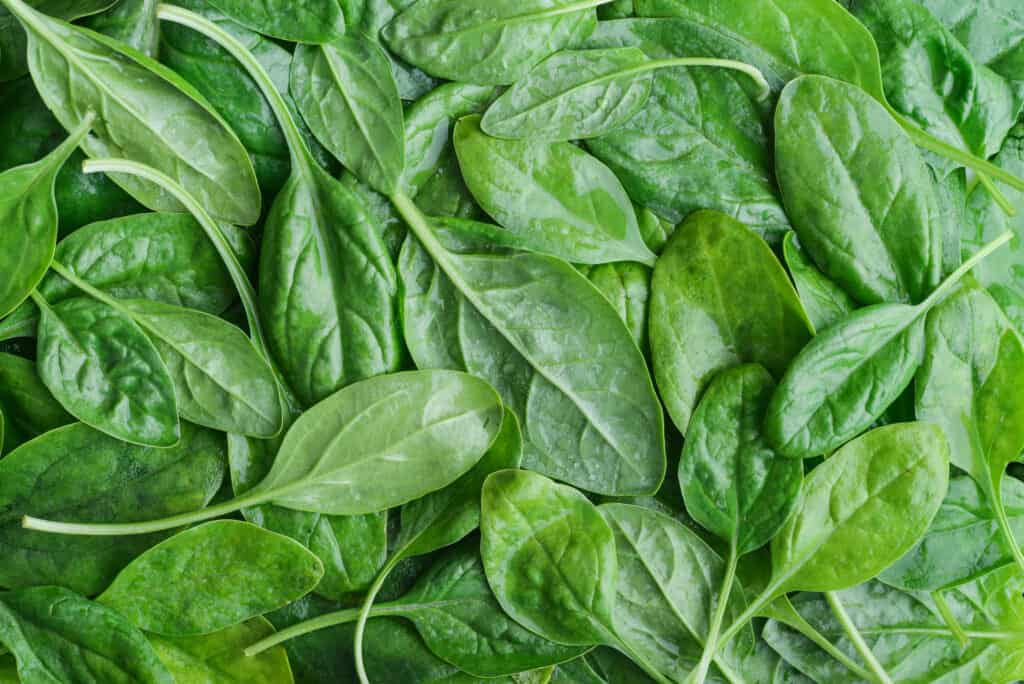
Spinach is its own species.
©iStock.com/tashka2000
However, when comparing spinach to lettuce, note that lettuce species have a wide range of leaf shapes. So, while spinach leaves tend to be oval or spade-shaped, the shape of lettuce leaves can vary widely by variety. Some varieties are wavy, scalloped, notched, spade-shaped, while others more resemble spinach leaves.
Additionally, several varieties of lettuce form dense or loose heads of leaves, whereas spinach leaves do not form a head. Also, spinach leaves have long, thin stems, whereas lettuce leaves tend to have shorter, thicker, less flexible stems.
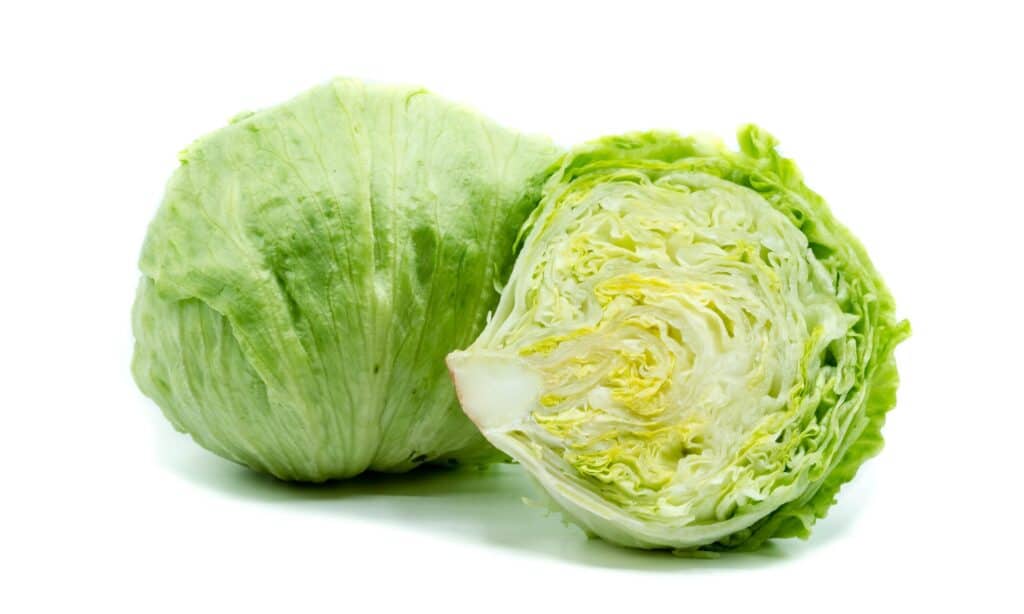
Several varieties of lettuce, like iceberg, pictured, form dense or loose heads of leaves.
©iStock.com/Animaflora
Spinach flowers are less than an inch long and come in shade of yellow and green. In comparison, lettuce flowers tend to resemble small daisies and are usually white, yellow, or purple.
Native Ranges and Growing Conditions
Spinach is native to Southwest Asia, while the lettuce genus is mostly native to temperate areas of Eurasia.
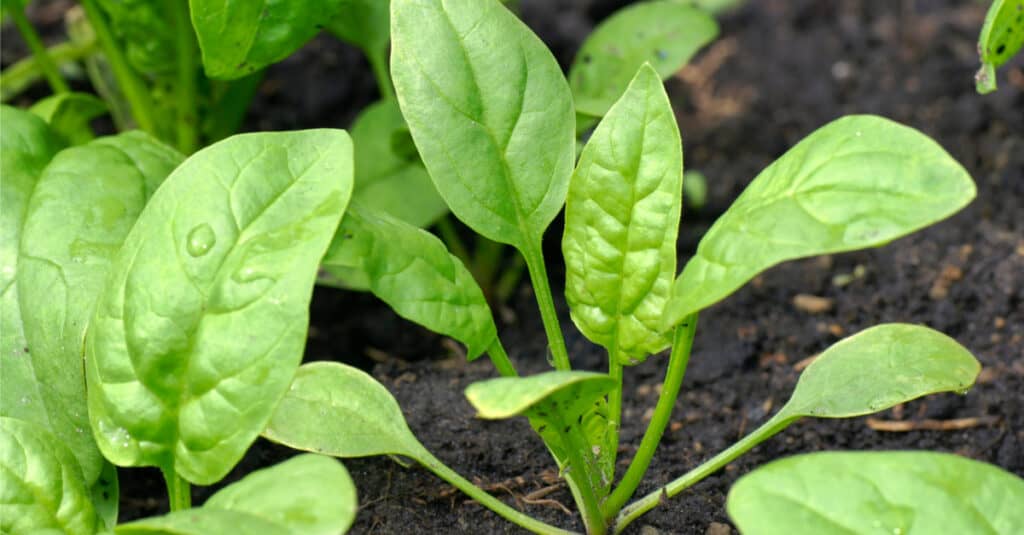
Spinach is a highly adaptable, cold-hardy plant that can thrive in USDA Zones 2a-11b.
©iStock.com/SylvieBouchard
In terms of cultivation, spinach and lettuce plants have similar growing preferences. Both spinach and the various species of lettuce can grow in full sun to partial shade, and prefer to grow in well-draining, moist, fertile soil that is slightly acidic. Spinach is a highly adaptable, cold-hardy plant that can thrive in USDA hardiness Zones 2a-11b. Lettuce plants are also typically cold-hardy, with several varieties requiring cold exposure for seed germination.
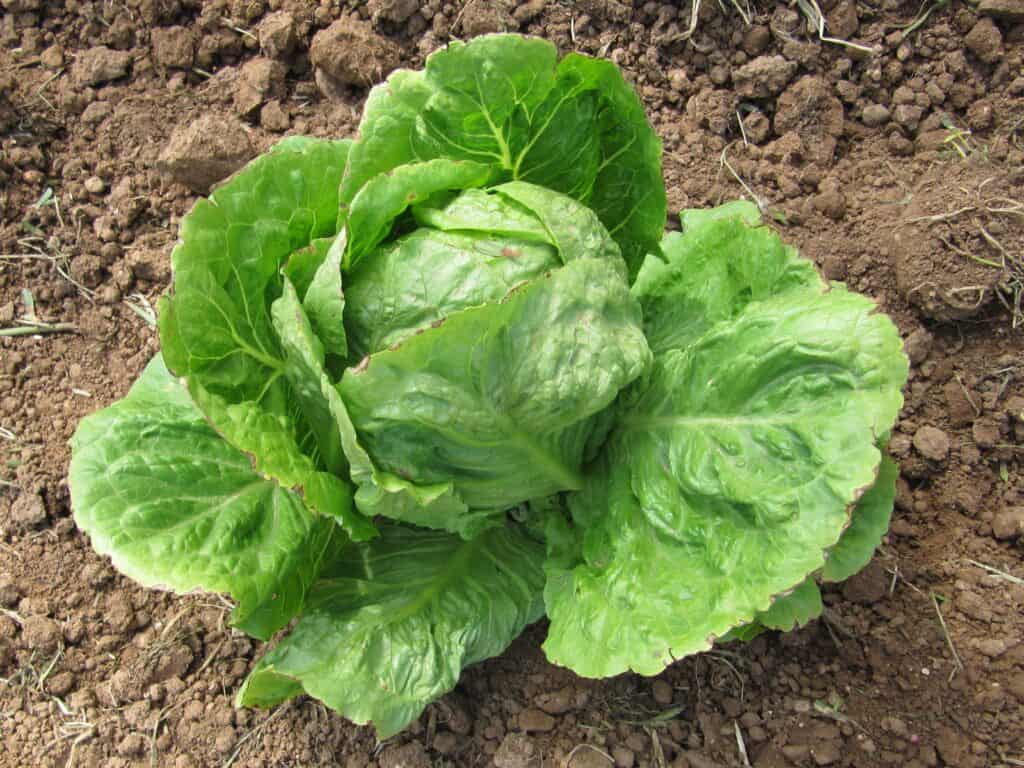
Lettuce plants are typically cold-hardy, with several varieties requiring cold exposure for seed germination.
©pedrolieb/Shutterstock.com
Spinach vs. Lettuce: Culinary Uses
Of course, when comparing the culinary uses of spinach vs. lettuce, it’s important to compare the cultivated, edible varieties of lettuce to spinach.
As leafy vegetables, spinach and lettuce are cultivated for culinary use around the world.
Spinach is a leafy green that boasts a variety of uses from salads, dips, baked meals, and steamed dishes. Common favorites in the US include spinach in salads and on sandwhiches, spinach and artichoke dip, baked spinach on pizza, and steamed spinach as a dinner side dish.
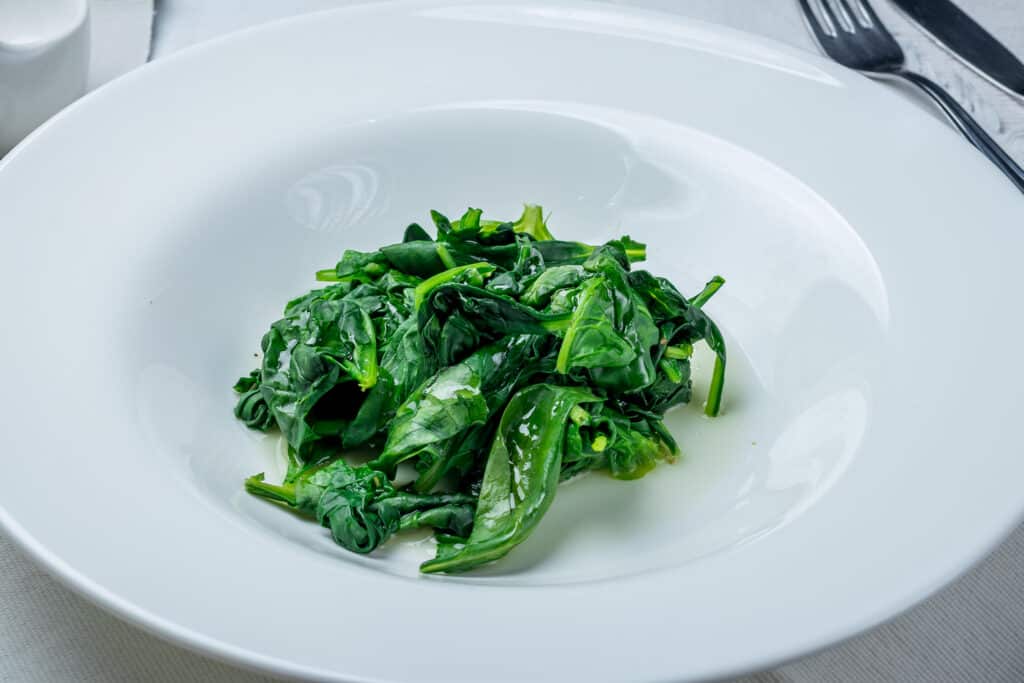
Steamed spinach is a popular side dish.
©Ratov Maxim/Shutterstock.com
In comparison, lettuce tends to be prepared in fewer ways, but is an integral component for salads and in sandwiches. Some varieties are crispy and pack a nice crunch (crisphead lettuce) while others have more tender leaves and mild flavor (butterhead lettuce).
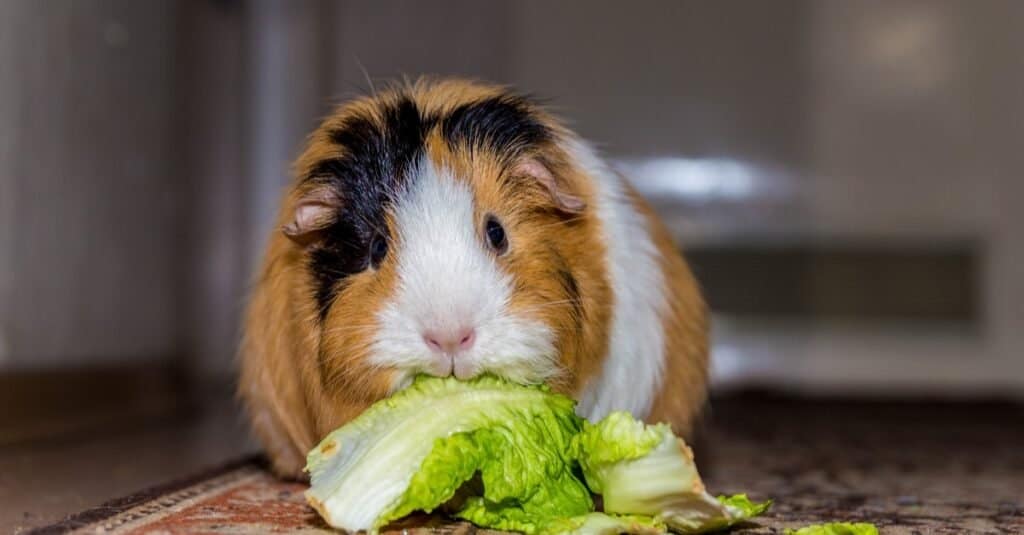
Humans aren’t the only ones who find lettuce delicious!
©Tomasz Stepien/Shutterstock.com
Up Next:
- Green Leaf Lettuce vs. Romaine
- Kale vs. Lettuce: What Are Their Differences?
- Cabbage vs Lettuce: 5 Key Differences
Sources:
- plants.ces.ncsu.edu/plants/spinacia-oleracea/
- a-z-animals.com/blog/can-dogs-eat-spinach-safely/
- inaturalist.ca/taxa/53106-Lactuca
The photo featured at the top of this post is © iStock.com/tashka2000
Sources
- ces.ncsu.edu (1970) plants.ces.ncsu.edu/plants/spinacia-oleracea/
- a-z-animals (1970) a-z-animals.com/blog/can-dogs-eat-spinach-safely/
- inaturalist.ca (1970) inaturalist.ca/taxa/53106-Lactuca
Thank you for reading! Have some feedback for us? Contact the AZ Animals editorial team.




